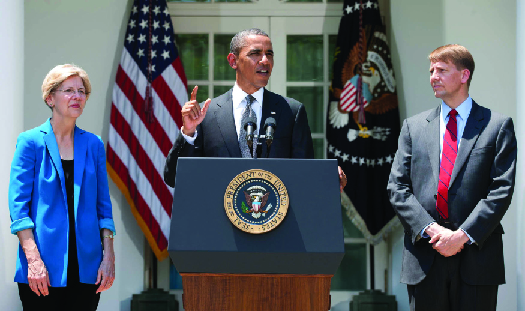| << Chapter < Page | Chapter >> Page > |
Apart from Congress, the president also executes oversight over the extensive federal bureaucracy through a number of different avenues. Most directly, the president controls the bureaucracies by appointing the heads of the fifteen cabinet departments and of many independent executive agencies, such as the CIA, the EPA, and the Federal Bureau of Investigation. These cabinet and agency appointments go through the Senate for confirmation.
The other important channel through which the office of the president conducts oversight over the federal bureaucracy is the Office of Management and Budget (OMB).
During the 1990s, the two political parties in the United States had largely come together over the issue of the federal bureaucracy. While differences remained, a great number of bipartisan attempts to roll back the size of government took place during the Clinton administration. This shared effort began to fall apart during the presidency of Republican George W. Bush, who made repeated attempts to use contracting and privatization to reduce the size of the federal bureaucracy more than Democrats were willing to accept.
This growing division was further compounded by Great Recession that began in 2007. For many on the left side of the political spectrum, the onset of the recession reflected a failure of weakened federal bureaucracies to properly regulate the financial markets. To those on the right, it merely reinforced the belief that government bureaucracies are inherently inefficient. Over the next few years, as the government attempted to grapple with the consequences of the recession, these divisions only grew.
The debate over one particular bureaucratic response to the recession provides important insight into these divisions. The bureau in question is the Consumer Financial Protection Bureau (CFPB), an agency created in 2011 specifically to oversee certain financial industries that had proven themselves to be especially prone to abusive practices, such as sub-prime mortgage lenders and payday lenders. To many in the Republican Party, this new bureau was merely another instance of growing the federal bureaucracy to take care of problems caused by an inefficient government. To many in the Democratic Party, the new agency was an important cop on a notably chaotic street.
Divisions over this agency were so bitter that Republicans refused for a time to allow the Senate to consider confirming anyone to head the new bureau ( [link] ). Many wanted the bureau either scrapped or headed by a committee that would have to generate consensus in order to act. They attempted to cut the bureau’s budget and erected mountains of red tape designed to slow the CFPB’s achievement of its goals. During the height of the recession, many Democrats saw these tactics as a particularly destructive form of obstruction while the country reeled from the financial collapse.

As the recession recedes into the past, however, the political heat the CFPB once generated has steadily declined. Republicans still push to reduce the power of the bureau and Democrats in general still support it, but lack of urgency has pushed these differences into the background. Indeed, there may be a growing consensus between the two parties that the bureau should be more tightly controlled. In the spring of 2016, as the agency was announcing new rules to help further restrict the predatory practices of payday lenders, a handful of Democratic members of Congress, including the party chair, joined Republicans to draft legislation to prevent the CFPB from further regulating lenders. This joint effort may be an anomaly. But it may also indicate the start of a return to more bipartisan interpretation of bureaucratic institutions.
What do these divisions suggest about the way Congress exercises oversight over the federal bureaucracy? Do you think this oversight is an effective way to control a bureaucracy as large and complex as the U.S. federal bureaucracy? Why or why not?

Notification Switch
Would you like to follow the 'American government' conversation and receive update notifications?